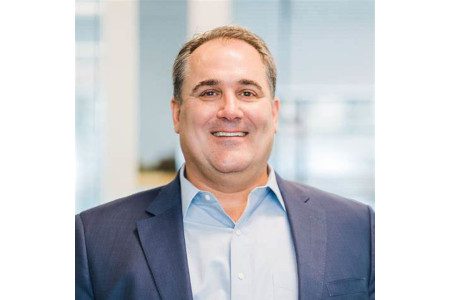Setfords Solicitors have been working with the British Ports Association on a report that details the developments that are being made in relation to autonomous shipping.
The British Ports Association (BPA) represents 100 port members and over 80 associate members. Our port members own and operate over 350 ports, port facilities and terminals of all sizes across the UK, facilitating the majority of the UK’s maritime trade, 95% of which is carried by sea.
Setfords Solicitors are working with the BPA as part of their Futures Programme where Setfords have first hand experience of the developments that are taking place in the Legal And Regulatory framework relating to Marine Autonomous Surface Ships (“MASS”) in the UK, Europe and, Internationally. Andrew Higgs of Setfords gives an overview of what is happening at the International Maritime Organisation
(“IMO”) and Susan Macpherson highlights some of the developments in the MASS Technological world, and, the practical and regulatory effects that these Ships will have on UK Ports and Harbours.
We take the view that there are business opportunities for both Major and Minor Ports in the British Isles for the use of Maritime Autonomous Surface Ships (“MASS”). Initially, these are likely to be short sea, coastal traffic within UK and Irish domestic, territorial and inland waters for UK-flagged and registered merchant ships/cargo ships. The primary reason for this is that it will take some while for the IMO’s regulatory review to be completed (December 2020?), and the legal and regulatory framework of a single nation State (such as the UK and the Republic of Ireland) will move rather more quickly than the international maritime community.
The practical effects of automation in UK Ports and Harbours – An Introduction
Whilst Andrew has outlined that the IMO are looking internationally in depth at the issues surrounding MASS, its Secretary General, Kitack Lim has pinpointed the real practical issue for Ports when he said:
“The advent of Autonomous ships is increasing the importance of communication between Ships and Ports, which will not only deal with safety issues, but also the Port will provide Services”
The biggest practical hurdle is going to be the application of existing Port Regulations to make the navigation of these Ships through Harbours safe and secure.
This was discussed at the UK Ports Conference towards the end of May when Steve Guest, Business Development and Marketing Director at Kongsberg Norcontrol, suggested that there would be a higher level of autonomy/remote operations in the ports and shipping sectors in the short and long term future.
It is also anticipated by Ports that there will be a greater emphasis on sustainability (e.g. Alternative bunkering), plus a greater use of Smart Data in operations and customer propositions. Underpinning it all, there is expected to be a greater imperative for focus on human factors in safety and skills.
What is happening in the Technological World?
One of The UK’s first autonomous and unmanned ships is the C- Worker 7. In Norway, The Norwegian Maritime Authority and the Norwegian Coastal Administration have signed an agreement for sea trials, which are taking place in the Trondheim Fjord, the first place in the world to be formally designated by a Coastal State for the testing of MASS.
The Yara Birkeland, which is the world’s first autonomous and electric container vessel, is due to be constructed by Norwegian shipbuilder VARD and to be delivered for launch in 2020. The vessel will gradually move from manned operation to fully autonomous operation by 2022. It has been licensed around the coast of Norway by Kongsberg which has worked with and has now purchased Rolls Royce. Its designers expect it to replace 40,000 truck journeys a year, reduce NOx and CO2 emissions and improve road safety in a densely populated urban area. This was initiated to improve logistics at Yara’s fertilizer plant.
These ships are battery powered and will require Ports to have sufficient Charging Facilities at the Dockside to recharge the batteries. In some Ports, this surely means a review of existing supplies of electricity to the berths.
The proximity of this activity to our UK ports brings ever closer the likelihood that Port customers importing goods from (say) the Baltic States and perhaps the Republic of Ireland will in the future adopt the use of smaller MASS on short sea routes to and around our UK shores.
What are the Challenges and Opportunities for UK Ports?
Some of the Challenges will be in the areas of Safety, Security, Cyber Security and breakdowns in communication systems. Also, fires on board, mechanical breakdown, communication with Autonomous ships, Pilotage, Tugs & Towage. There will be alterations of quays needed for alongside berthing and the reduction of crews on board, which means perhaps an opportunity for the Port as well as a challenge. How too will the Ports Insurers (marine and non-marine) view the risk of MASS operating in confined spaces in the Insured Port?
The Opportunities for ports can be seen in terms of increased port jobs in the Port Services Industry requiring high levels of technical skill by Shore based Operators and back up service providers. So too, a re-assessment of costs and payment for this new Market, possibly having an impact on Harbour dues and other commercial agreements.
This can open up new business, so Ports should engage with Owners and Operators of MASS and Customers to open up a dialogue on the capabilities of these autonomous or semi-autonomous ships. Also review Port plans. With the prospect of some types, of MASS visiting our ports, now is the time to start dusting off these documents and thinking longer term. The advent of Automated Terminals and platooning of trucks means that we are entering a new world of automation, which may make the use of Port Land more efficient and streamlined. Perhaps the face of the Waterfront needs to change and some land areas need to be regenerated. Parts of the UK are more ready for this than others.
Alec Don, the Chairman of the British Ports Association, has called on UK Government and industry to grasp these opportunities. Earlier this year in an address to the industry and Maritime Minister at the British Ports Association Annual Lunch, he said: “as a country we have to be prepared to release this wave, to facilitate investment; to make it easy to invest in ports, in port connectivity and in industrial sites connected to ports. It is these sites that will generate and hold the jobs we need to carry Britain forward”. The BPA’s estimate of £1.7 billion in short and medium term investment at the top end shows the ambitious nature of this sector of Industry.
The Way Forward?
We would like to suggest that serious consideration should be given by Harbour Masters, and Port and Harbour Authorities, to the following three suggestions:-
- To use the appropriate nautical nomenclature of all “ships” so as to include all “small ships” (including for example, Jet Skis, RHIBS etc);
- that is, if you do not already do so, and
- To review your Bye-Laws for consistency, and the operation of MASS (as appropriate), and
- To register your port or harbour as the home port; in order to facilitate Port State Control of “all ships”, including “small ships”, which is understood to be an issue for Harbour Masters.
Andrew Higgs and Susan Macpherson will be presenting in more detail on these subjects and with updates on the International regulatory framework for MASS and the practical implications for UK Ports and Harbours at the BPA Annual Conference on 11th October 2018 at the Sage in Gateshead.
To read the full report, please go to: www.britishports.org.uk
Andrew Higgs

Commercial Dispute Resolution, Insurance and Legal Risk Management Consultant
Susan Macpherson

Senior Consultant Solicitor





